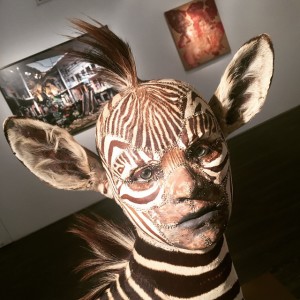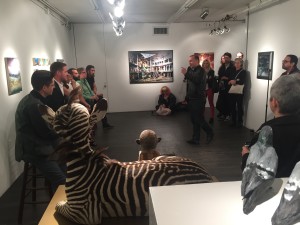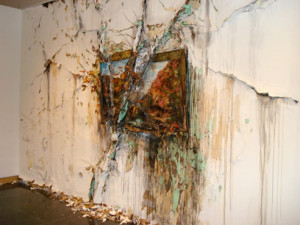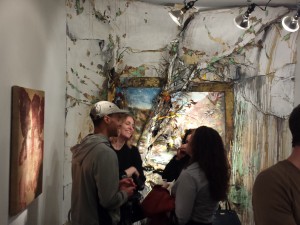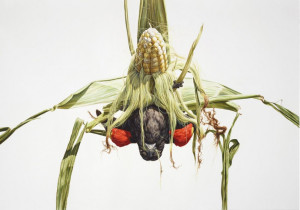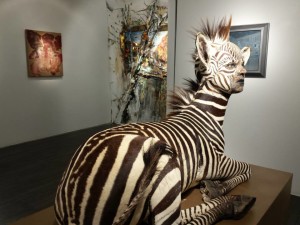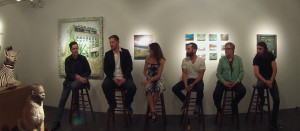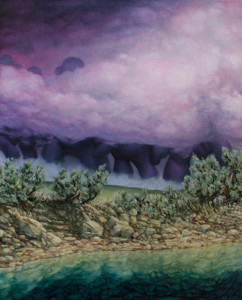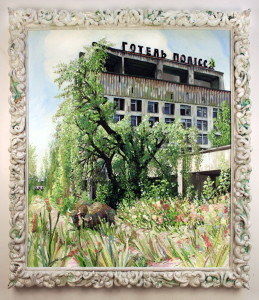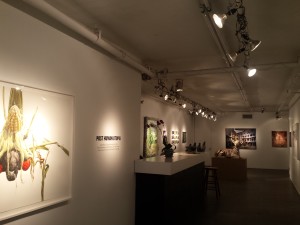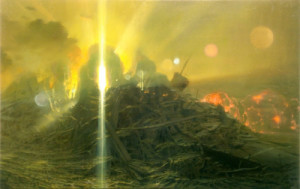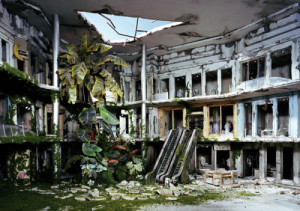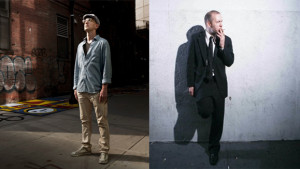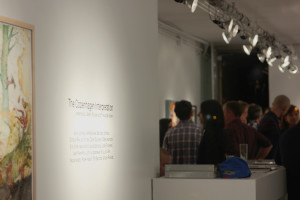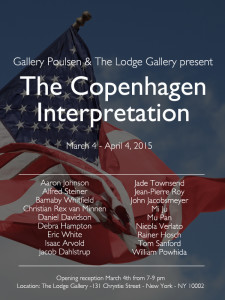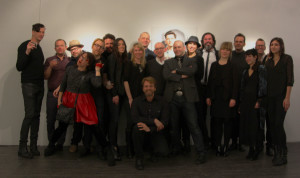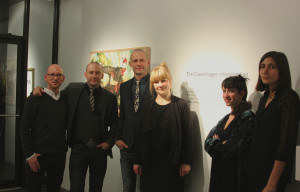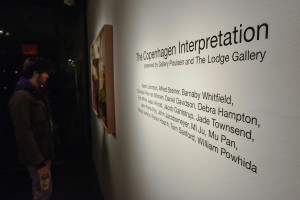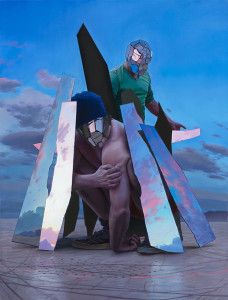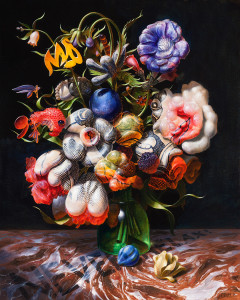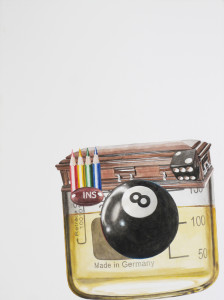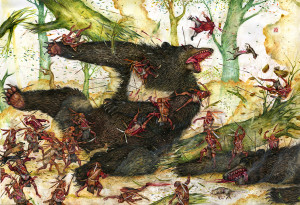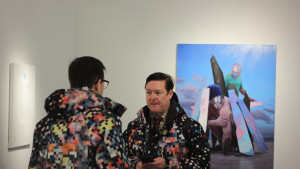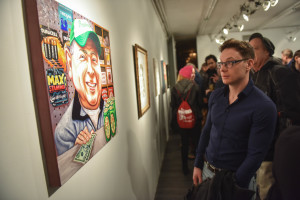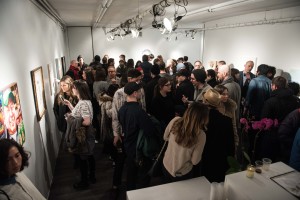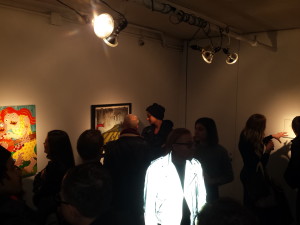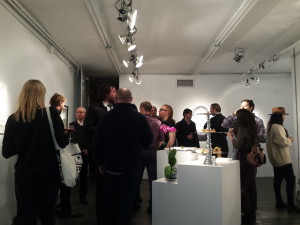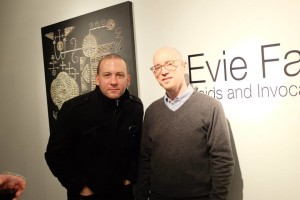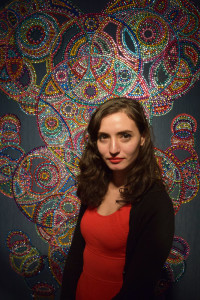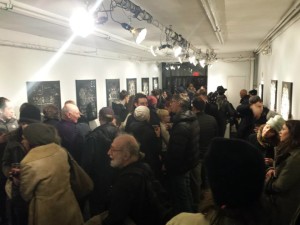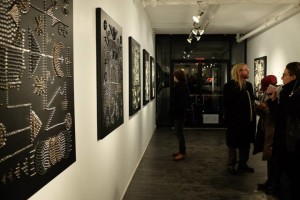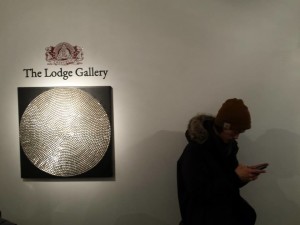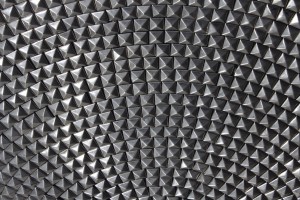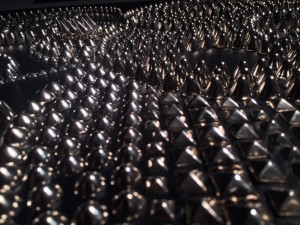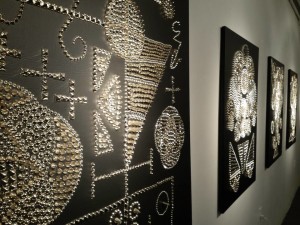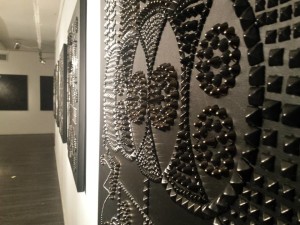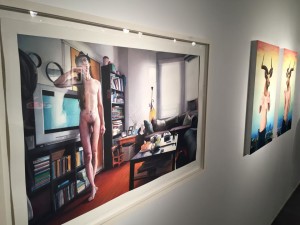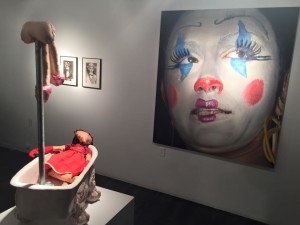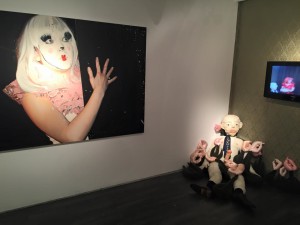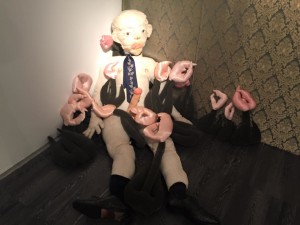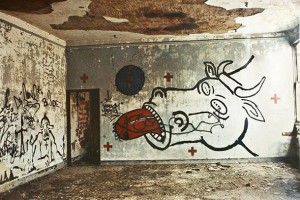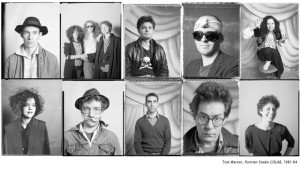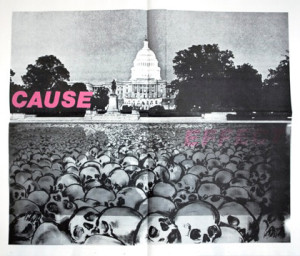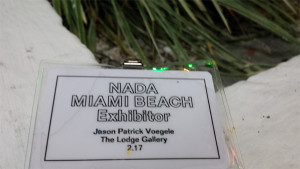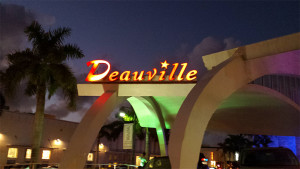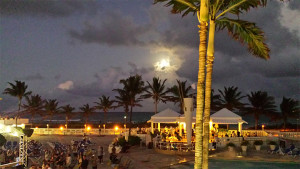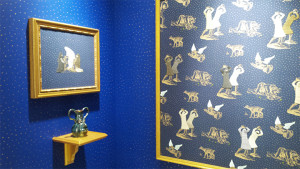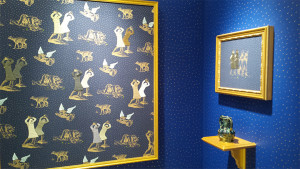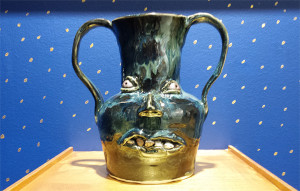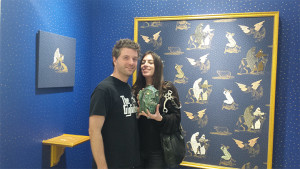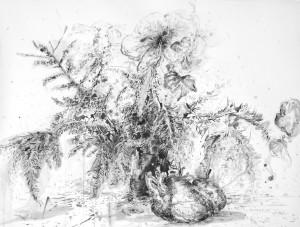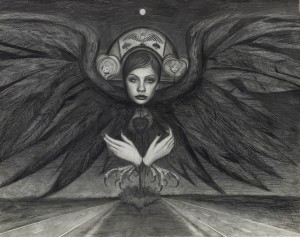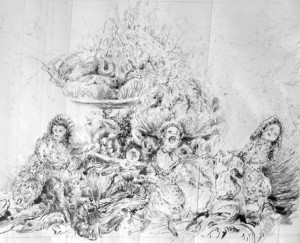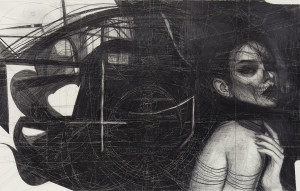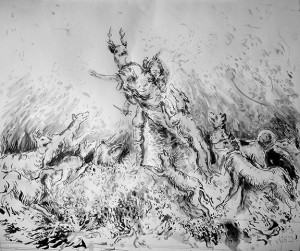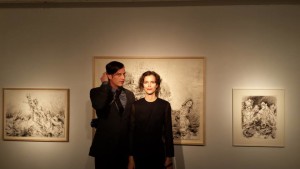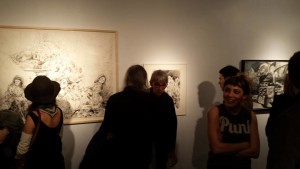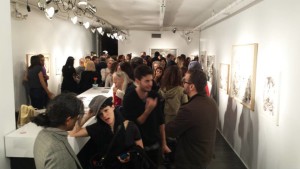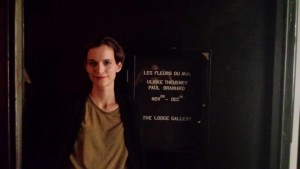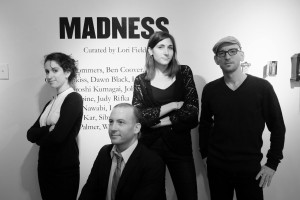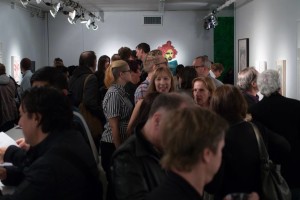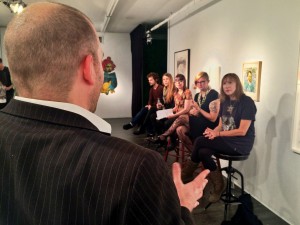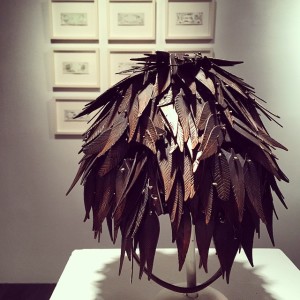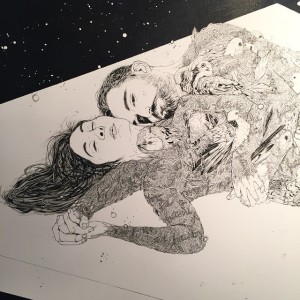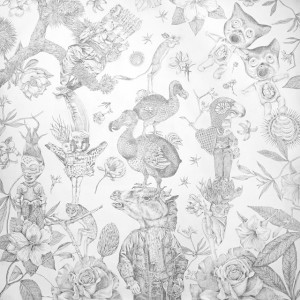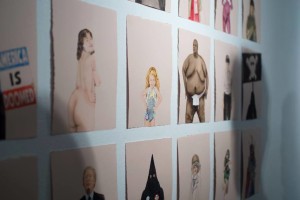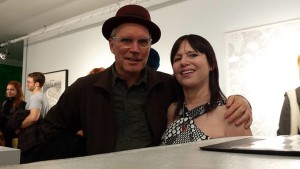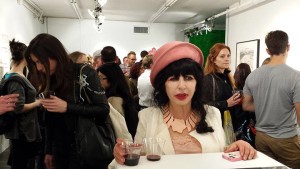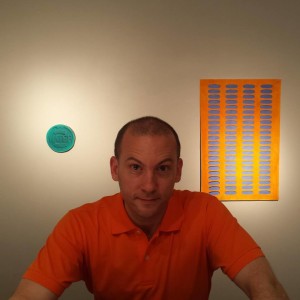
http://installationmag.com/the-copenhagen-connection/
by A Moret and Shana Beth Mason
with Jason Patrick Voegele
In the vibrant, emergent neighborhood of Manhattan’s Lower East Side, some of the most exciting contemporary art is evolving and being seen. It’s no surprise, then, that a new kind of gallery would spring up, playing to more alternative and intimate tastes than those of the “white cube” variety housed in Chelsea or the Upper East Side. The Lodge Gallery, co-founded by Keith Schweitzer and Jason Patrick Voegele, is a hybrid between art salon, exhibition space, community portal, and aesthetic experimentation. Installation speaks to Voegele about its history, its mission, and its future.
(A. Moret) How did The Lodge Gallery come about?
(Voegele) When we first started working together and were beginning to focus our visions, everything seemed to fall into place. It was a natural pairing. After about a year of curating and co-directing a variety of projects around New York and Miami, we wondered if the traditional idea of a gallery could be broadened or reimagined to suit both a changing art market and our shared vision of an alternative business model. We knew that we wanted our new headquarters to be more than just four white walls and wanted it to be a venue for debate, artistic experimentation, and social interaction. We wanted to build an experimental, multi-dimensional exhibition format. Eventually, we chose the Lower East Side because there is such a rich history of experimentation and authentic expression there. We wanted to be part of a community of galleries that shared our values, so as soon as the opportunity arose, we seized it and called it The Lodge.
(A. Moret) What drives your curatorial programming?
(Voegele) We feel like part of our job is to cultivate and facilitate opportunities for artists first, and everything else follows. There is definitely a core group of familiar artists and faces at The Lodge, but we like working with new artists too and are always finding new ways to develop projects that engage new talent. We primarily exhibit mid-career, representational artists. If you look back through our catalog, you will see hints of special interests that we have revisited from time to time. Keith and I have a lot of diverse interests and are curious about exploring a broad spectrum of subject matter. In any given season, you might find us investigating subjects such as architecture, natural science, and/or mythological archetypes. We both like to think that curation can be an art form, itself, and we are lucky in the sense that we have found a unique way to operate a program allowing us to explore our own curiosities about the world around us.
(A. Moret) In what ways do you feel that each of your respective backgrounds support the The Lodge Gallery’s mission?
(Voegele) Keith and I come from very different backgrounds, but I think we are both grounded in similar values and a sense of community. Keith grew up in New York and studied art and business at The George Washington University in Washington D.C. I came to New York in 1991 from an international school in Taipei, Taiwan to study painting and art history at Pratt Institute in Brooklyn. Keith’s financial background and experience in public art programming coupled with my background in art history and commercial gallery experience drive a lot of our alternative ideas about how to manage the gallery and all of our other projects. I think that our individual experience and history of engaging the public through [previous] organizations we have worked with and have founded reflect well in the alternative business model we have built. One of the things we enjoy the most here at the Lodge is the opportunity to converse with visitors from all sorts of various backgrounds. I think it was important for both of us that The Lodge was designed to be a useful and effective part of the community.
(A. Moret) How did you first meet and then determine you wanted to open the gallery together?
(Voegele) In 2012, Keith and I were both out in NYC hustling to grow our own arts organizations. I had been curating exhibitions and managing private art collections with Republic Worldwide since I had left a Chelsea gallery job in 2009, and Keith, after having been one of the founding members of No Longer Empty, had begun a new public art venture called The MaNY Project. We were introduced by a mutual friend to work on an exhibition on 35th street. We hit it off right away and the show was a success. Following that show, there was actually a long period of courting in a sense. After working together on various exhibitions and projects around NYC and Miami, we decided to open a gallery together. We wanted our professional partnership to be based on a mutual respect for each other’s work ethic and a shared vision of the future. The similarity in our aesthetic tastes were obvious from our first project, but it took about a year of working together before we settled on a plan to merge our professional projects and lay down the foundations of what would become The Lodge Gallery.
(A. Moret) The Lodge Gallery also serves as the exhibition space for Republic Worldwide, giving the gallery two distinct spaces- an exhibition space and a bar area that encourages conversation. How do the spaces complement each other? Do you see Republic Worldwide as a salon that incubates ideas and supports the work of emerging artists?
(Voegele) From its inception, Republic Worldwide has had three separate divisions. The first is our art consultation and art logistics department, which manages both private and corporate art collections. The second is our community and charitable outreach program. The third is our exhibition division, which is most visible in the form of The Lodge Gallery. In addition to co-directing The Lodge, Keith and I manage the day-to-day business of the larger Republic together, as well. The bar behind the gallery is called Figure 19, and in the evenings it transforms the gallery into a whole other animal. We are partners with Fig 19 and with that partnership (in many ways) it dictates our unusual hours, which run from mid-afternoon to late in the evening. Certainly, the history of salon culture plays a huge part in the history of the Lower East Side and the New York art world. When people refer to New York as the “great melting pot”, they are referring to neighborhoods like the L.E.S. that have long histories of fusing multiple cultures into one cohesive, functional environment. Often it’s been the salons, galleries, and bars that have served as great congregation points for people from all walks of life to gather together for a drink and debate philosophy or the news of the day. Here at The Lodge, surrounded by the best and brightest artists in the city, we like to think we offer an extension of that history. We hope that our adapted formula for a new generation offers the same opportunity for community and social interaction that inspired us when we were first starting out.
(A. Moret) What kind of events are you planning for the future?
(Voegele) Our next exhibition at The Lodge Gallery is called Post Human Utopia, which poses a fascinating, thoughtful experiment: if you take every living human off the Earth, what traces of us would linger and what would disappear? Will the footprint of humanity fade away completely, or have humans so irrevocably altered the environment that the impact of man will continue to shape the earth’s landscape far beyond the days of our departure? The show features Valerie Hegarty, George Boorujy, Kate Clark, Ryan Mclennan, Sarah Bereza, Doug Young, and Lori Nix. It takes a unique look into a seemingly dystopian situation and contemplates the positive repercussions of our absence. That show opens on April 22. Beyond that, our Spring and Fall seasons for 2015 will present all sorts of interesting projects. You can keep up to date with all of our upcoming work on our website.
(A. Moret) For the group exhibition “The Copenhagen Interpretation,” you presented the work of 18 artists working in drawing, painting, collage, and photography. It is in collaboration with Gallery Poulsen (a progressive exhibition space in Copenhagen)? Is this your first time collaborating with them? What prompted the presentation of their artists at The Lodge Gallery? What similarities do you see between The Lodge Gallery and Gallery Poulsen?
(Voegele) Well, first we would like to thank Morten Poulsen from Gallery Poulsen in Copenhagen for reaching out to us with the idea for this project last December at Art Basel in Miami. He was at Pulse and we were doing NADA, just up the beach. We have both worked with so many of the same artists over the years; it seemed perfectly harmonious that we would team up on a project together. Morten primarily shows artists from New York at his gallery, and because both of our galleries embrace a similar aesthetic and cull from a similar network of artists, there is a certain amount of crossover that happens in both programs. We might have different formulas for success, but we attract similar progressive, intellectually forward-minded talent. It’s the first direct collaboration we have done together, but it probably wont be the last. It’s been a lot of fun and has a very “family” atmosphere. After the “The Copenhagen Interpretation” comes down on April 4th, whatever is left of the artwork will return to Copenhagen for Part II of the project, which took place at Morten’s gallery in Copenhagen’s meatpacking district on April 17th.
(A. Moret) The gallery’s 18 artists are both from the US and abroad. Why is it important for The Lodge Gallery to showcase the work of international artists?
(Voegele) Most of the artists in the show are based in New York. They are all from very diverse backgrounds and upbringings. I grew up overseas in Hong Kong and Taiwan, and was immersed in an extremely diverse international community from a very young age. Keith has travelled extensively, as well, and was also raised with a very realistic perspective of our current, interconnected global society. I think part of our vision here at The Lodge Gallery is to embrace partnerships and projects that promote this interconnectedness and offer artists the opportunity to explore ideas about their place in an increasingly global art market. I think it’s also interesting to note the rich history of immigrant culture in the Lower East Side that is still very much alive today. For hundreds of years and after the arrival of countless waves of immigrants from every corner of the earth, the Lower East Side continues to thrive as a place where people from anywhere can come to pursue dreams and share ideas together. In that sense, we feel like our environment really plays well into our vision.
(A. Moret) The title of exhibition, The Copenhagen Interpretation, suggests that each artist reflects their environment in some direct way. William Powhida writes a tromp l’oeil piece addressed to New York City, while Rainer Hosch captures a comedy legend. In what ways have you discovered the significance of an artist’s environment in their work?
(Voegele) Well, the Hosch and the Powhida works are good examples. Hosch is in California and over there, everyone is a comedian (so it’s no wonder that Carlin is rolling his eyes). Seriously though, Powhida is a good example, too. He has a solo exhibition up at Gallery Poulsen on the same subject right now. I also think that John Jacobsmeyer’s Alligator Pit is a good example of the influence of familiar video game imagery on traditional media, and Tom Sanford always has a magical way of bringing personal characters from his life and neighborhood into his work. Daniel Davidson is very successful at the same thing, but with his own unique style.
(A. Moret) How has the public responded to the show, thus far, since opening during Armory Week?
(Voegele) The response has been phenomenal and it’s been great working with so many talented and dedicated artists. The artists in Morten’s stable are all close friends, and even though we know many of the artists very well, it’s been inspiring to be caught up in the team camaraderie. Although it was Armory Week when we opened and there were hundreds of art world events happening around the city, the VIP and collector reception and the public reception that followed generated record numbers of visitors and guests. Press and sales have been great too, so we are looking forward to next year and what might come out of another collaboration.
